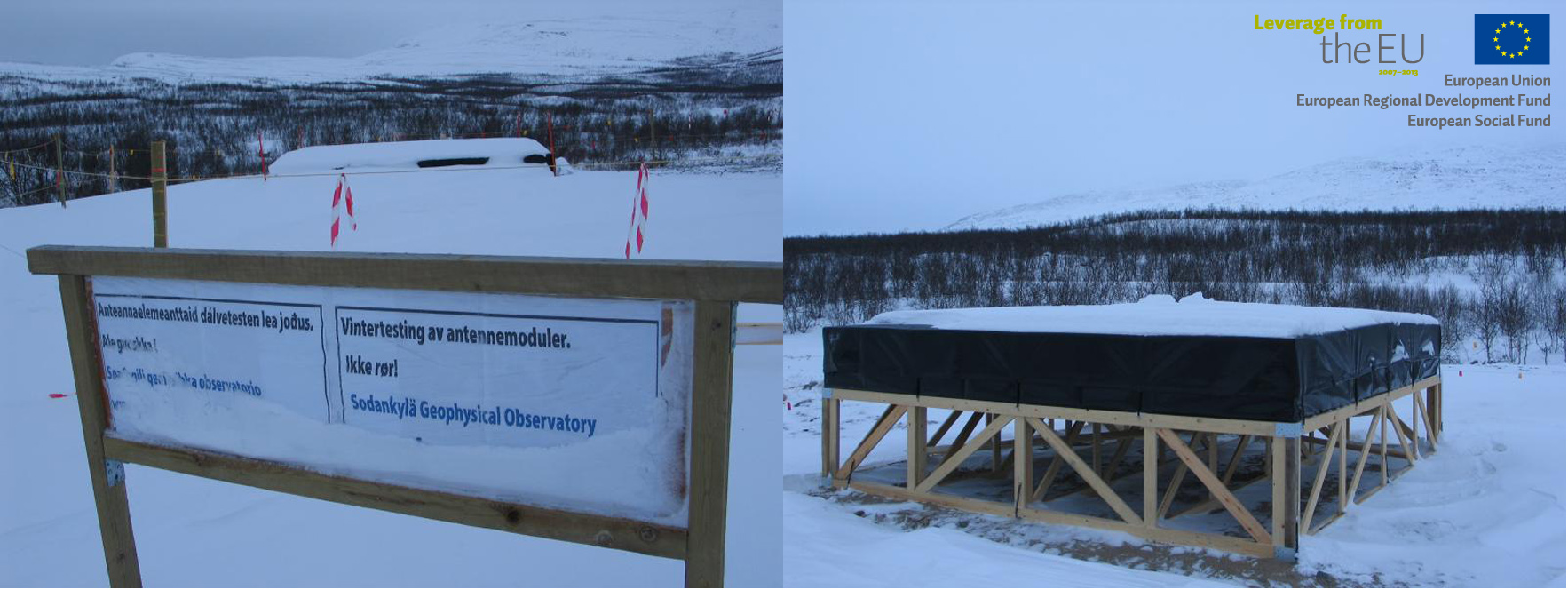Daily Image
28-01-2011LOFAR HBA tiles undergoing winter testing in Finnish Lapland
| Submitter: | Thomas Ulich & Corina Vogt |
| Description: | Recently, LOFAR/ASTRON reached an agreement with the University of Oulu http://www.oulu.fi/english/ ) for the delivery of a LOFAR remote station. The university's Sodankylä Geophysical Observatory (SGO, http://www.sgo.fi/) is well known in the world for the development of sophisticated radar measurement methods. Moreover, SGO is the host of one of the radar receivers of the EISCAT Scientific Association http://www.eiscat.se/ ). EISCAT operates three high-power incoherent scatter radars in Northern Scandinavia and Finland. Currently, EISCAT is preparing to build EISCAT_3D ( http://www.eiscat3d.se/ ), a new radar, which will be based on multiple large phased arrays for volumetric imaging of the near-Earth space. This facility will have 10 times higher resolution than the best incoherent scatter radars today. SGO has attracted funding from the European Regional Development Funds for Lapland as well as from the University of Oulu to deploy a LOFAR remote station to Kilpisjärvi (69.0°N, 20.9°E), located about 85 km from the 224 MHz EISCAT VHF radar near Tromsø, Norway. The LOFAR station will be used as a receiver for the existing VHF radar and thereby as a testbed for new receiver technology pioneering the development work for EISCAT_3D. Furthermore, EISCAT_3D will require of the order of 100.000 antenna elements in total, and the suitability of LOFAR HBA tiles or related technology for this purpose is under investigation. As LOFAR hardware has never been tested in such extreme environmental conditions, LOFAR/ASTRON delivered two dummy HBA tiles to test them through winter. They were installed using two different anchoring methods. One was placed on the ground just like here in the Netherlands (left image) and one was placed on a wooden frame (right image). This should give insight into how the tiles can withstand the arctic cold and wind over a long winter and what is the best method to secure them to the ground. |
| Copyright: | Sodankylä Geophysical Observatory, Finland |
| Tweet |  |
